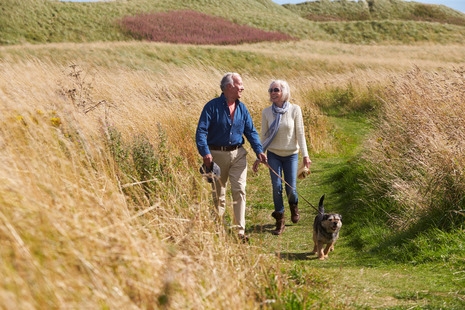Dog-walking leads to a Higher Risk of Bone Fractures in Older Adults
Orange County, CA - March 15th, 2019 - Many people take part in walking their dog, and most older adults walk their dog daily to stay active. Dog-walking has numerous physical and emotional benefits. However, the number of seniors requiring medical treatment for injuries associated with dog-walking has more than doubled from approximately 1,700 in 2014 to 4,400 in 2017. The most frequent broken bones were wrists, hips, and upper arms, with 80 percent of individuals who suffered fractures being women.
The dog-walking fractures recorded in the public database of the US Consumer Product Safety Commission lists injuries from roughly one hundred emergency departments nationwide. The answer is unclear as to why even though the senior population has grown as a percentage of the United States population. The massive generation born between 1946 and 1964 is more active than previous generations of seniors. Health care providers suggest dog walking as a way to better one’s health.
“We make all these recommendations about pets, and yet we don’t really understand if there are potential negative implications. There are things we should be aware of before saying, ‘Hey, you should get a dog and take your dog for a walk,’” said co-author Jaimo Ahn, an associate professor of orthopedic surgery at Penn Medicine.

Researchers from the University of Pennsylvania published their findings in the JAMA Surgery. The study focused on seniors, where researchers thought would be the most exposed to the type of injury, and where broken bone can be hazardous. Adults over the age of 65 who have fractured their hips have a 20 to 30 percent chance of dying within a year; that may be because frailer people are more likely to fall.
“We occasionally see patients who are seemingly doing a good thing — trying to be active, taking their pet out and then having an accident they never anticipated. People go skiing and think they might get injured. But this is kind of surprising to them, and it turns their life upside down,” Ahn noted.
Study authors stress that the results are not meant to discourage owning or walking a dog, among seniors. Health care physicians should discuss the risks with their patients.
Contact Ampronix:

Email: info@ampronix.com
International Sales: +1 949-273-8000
Domestic Sales: 1800-400-7972 for US and Canada
Follow Us:
Share This Article:
View our Product Catalog Online Here
About Ampronix
Ampronix is a renowned authorized master distributor of the medical industry's top brands as well as a world-class manufacturer of innovative technology. Since 1982, Ampronix has been dedicated to meeting the growing needs of the medical community with its extensive product knowledge, outstanding service, and state-of-the-art repair facility. Ampronix prides itself on its ability to offer tailored, one-stop solutions at a faster and more cost-effective rate than other manufacturers. Ampronix is an ISO & ANSI/ESD certified facility. To learn more go here.

Dog-walking leads to a Higher Risk of Bone Fractures in Older Adults Orange County, CA – March 15th, 2019 – Many people take part in walking their dog, and most older adults walk their dog daily to stay active. Dog-walking has numerous physical and emotional benefits. However, the number of seniors requiring medical treatment for injuries associated […]



